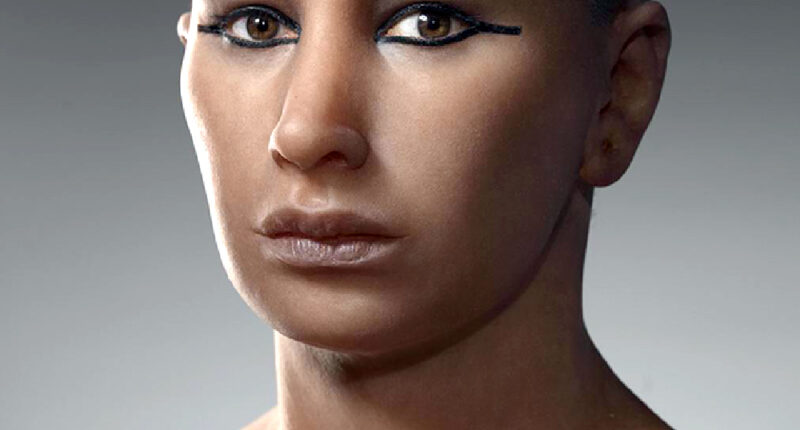RESEARCHERS have digitally recreated King Tutankhamun’s face for the first time ever.
It is believed the young pharaoh ruled over Egypt during the Eighteenth Dynasty from the age of nine until his death at age 19.
For hundreds of years, scientists have been trying to figure out what the royal looked like to no avail.
Now 3,300 years later, teams from Australia, Italy, and Brazil have utilized technology to re-create the face of King Tut.
The findings were presented in a new study soon to be published in the Italian Journal of Anatomy and Embryology.
Researchers used digital models and pre-recorded measurements of the King’s mummified skull to generate the face and the results are stunning.
“He looks like a young man with a delicate face,” said Brazilian graphic designer and co-author Cicero Moraes.
“Looking at him, we see more of a young student than a politician full of responsibilities, which makes the historical figure even more interesting.”
Moaraes did note that the modeling was challenging because the team didn’t have direct access to the deceased pharaoh’s skull.
“It was detective work, where traces of information were concatenated in order to provide us with a three-dimensional model of the skull,” explained Moraes.
Most read in News Tech
‘With the proportion data and some important cephalometric measurements, it was possible to take the digital skull of a virtual donor and adjust it so that it became the skull of Tutankhamen.”
Using their method, the team was able to reveal the size of Tut’s lips, the position of his eyeballs, the height of his ears, and even the front side of his nose.
“All of these projections are based on statistical studies that were performed on CT scans of living individuals from several different ancestries,” Moraes said.
The graphic designer noted that the team is “confident” that there is good compatibility with the real face in the general structure.
“Our reconstruction is amazingly close to the one made by a French team a few years ago,” said Michael Habicht, an Egyptologist and archaeologist at Flinders University in Australia and co-author of the study.
“It also corresponds with the ancient depictions of Tutankhamun, especially with the head on the lotus flower from his tomb treasure.”
King Tut’s burial tomb was discovered in 1922 by British archaeologist Howard Carter.
It was found underneath Egypt’s Valley of the Kings and packed with ornate objects such as gold-covered chariots, alabaster vessels, and inlaid furniture.













